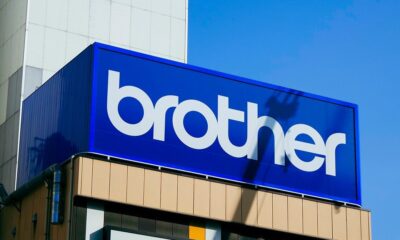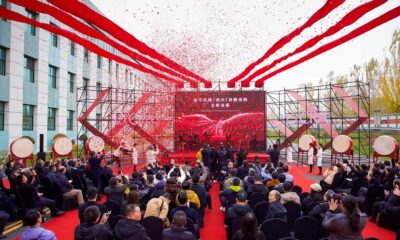Fashion
Japan to back $550-bn investment package under US tariff deal

The package, detailed in a recent memorandum of understanding (MoU), focuses on sectors like metals, pharmaceuticals, energy, shipbuilding, artificial intelligence, quantum computing and chips, with investments planned till January 2029.
Japan will set up an investment facility at the state-owned Japan Bank for International Cooperation to back a $550-billion investment package under its tariff deal with the US.
President Donald Trump will direct the investments and the projects.
All investments will be made before the conclusion of Trump’s term in office.
The US-Japan MoU offers the latter the choice to opt out of some investments.
President Donald Trump will direct the investments and the projects funded by Japan. All investments will be made before the conclusion of Trump’s term in office.
The MoU document, signed in Washington, DC, by US commerce secretary Howard Lutnick and Ryosei Akazawa, Japan’s minister in charge of economic revitalisation and the country’s chief tariff negotiator, includes a ‘boomerang’ clause, which states that tariffs could be taken back to higher levels if Japan declines to make investments.
Safeguards include a committee and consultation structure that brings some governance to the process, profit-sharing that is more favourable to Japan than originally envisioned and a recognition that Japan does have some authority to pick and choose deals.
“What we’ve achieved with our Japanese partners is an absolute game changer for America’s future—and it’s exactly what the America First trade agenda is all about,” Lutnick wrote in a post on X.
“For the first time ever, President Trump will literally direct these investments for the benefit of America,” he wrote.
As part of the deal reached by the two countries on July 22, Japan committed to invest up to $550 billion into key industries in the United States, but the time frame and precise implementation were left undefined.
The investment committee should consult a committee with representatives from both nations before submitting recommendations to the US President. The body will provide input related to the strategic and legal considerations of the investments, according to US media reports.
Each selected project will be executed by a special-purpose entity managed by the United States or a designee in the capacity of general partner, the MoU noted.
The MoU offers Japan the choice to opt out of particular investments. But before such a decision, it must consult with the United States. By declining to fund certain projects, Japan will lose profit rights until the United States is compensated, and risks new tariffs imposed on its exports.
The MoU also outlined a two-phase distribution plan for profits generated by the projects. Profits are shared 50-50 until both countries have received a baseline entitlement amount, which covers interest, part of the original investment and any carryover. After that, the United States gets 90 per cent of profits and Japan gets 10 per cent.
Fibre2Fashion News Desk (DS)
Fashion
Extreme Cashmere opens North America flagship in New York City

Published
November 13, 2025
Extreme Cashmere has announced the opening of its first North American flagship store in New York City’s Soho district.
Located at 152 Mercer Street, the new Extreme Cashmere store was designed in collaboration with architect and designer Hidde Dijkstra and combines innovative retail design points with those of a luxurious home.
Taking inspiration from 20th-century modernism and a collector’s style, the interior features a mix of vintage and contemporary pieces sourced across Europe. Key pieces include a 1970s Italian coffee table and a sofa discovered at the Marché aux Puces in Paris, alongside Milo Baughman steel-frame chairs upholstered in poppy-printed fabric.
Inside, visitors will also find the brand’s gender-neutral fashion subtly stored in floor-to-ceiling closets, alongside lounge areas to relax and take in the store.
The New York City stores comes several months after the fashion brand opened its debut flagship store in its native Amsterdam in April this year.
“Building on the concept we developed in Amsterdam, we’re taking our very first flagship in New York to the next level, said Saskia Dijkstra, who founded Extreme Cashmere in 2016.
“This store is about time, and having the luxury of slowing down –
interacting genuinely with the brand and the garments, and truly considering what you buy.”
Copyright © 2025 FashionNetwork.com All rights reserved.
Fashion
Dillard’s sales gain 3% on women’s apparel, lingerie
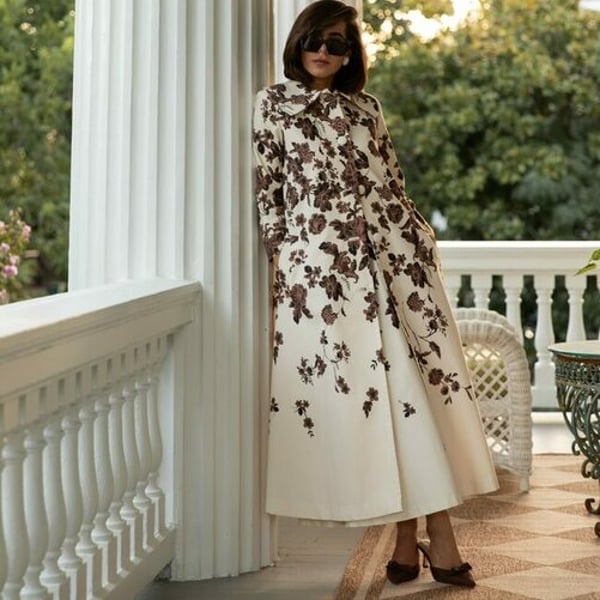
Published
November 13, 2025
Dillard’s announced on Thursday a 3 percent uptick in net sales for the third quarter, with women’s apparel, accessories and lingerie logging strong sales growth on last year.
The Little Rock, Arkansas-based company said retail sales for the three months ending November 1 rose 3 percent, while sales in comparable stores for the same period also increased 3 percent.
By category, sales in ladies’ accessories and lingerie, juniors’ and children’s apparel and ladies’ apparel “increased significantly” during the quarter, while sales “increased moderately” in shoes, and “increased slightly” in home and furniture, men’s apparel and accessories and cosmetics, according to an earnings update from the American retailer.
Net income for the 13-week period inched forward to $129.8 million, or $8.31 per share, compared to $124.6 million, or $7.73 per share in the prior-year period.
Dillard’s also announced the upcoming closure of its store at The Shops at Willow Bend in Plano, Texas, which is expected to shutter in January.
The company currently operates 272 Dillard’s stores, including 28 clearance centers, spanning 30 states as well as its online store.
Copyright © 2025 FashionNetwork.com All rights reserved.
Fashion
US’ Steven Madden’s Q3 revenue climbs on DTC momentum, profit rises
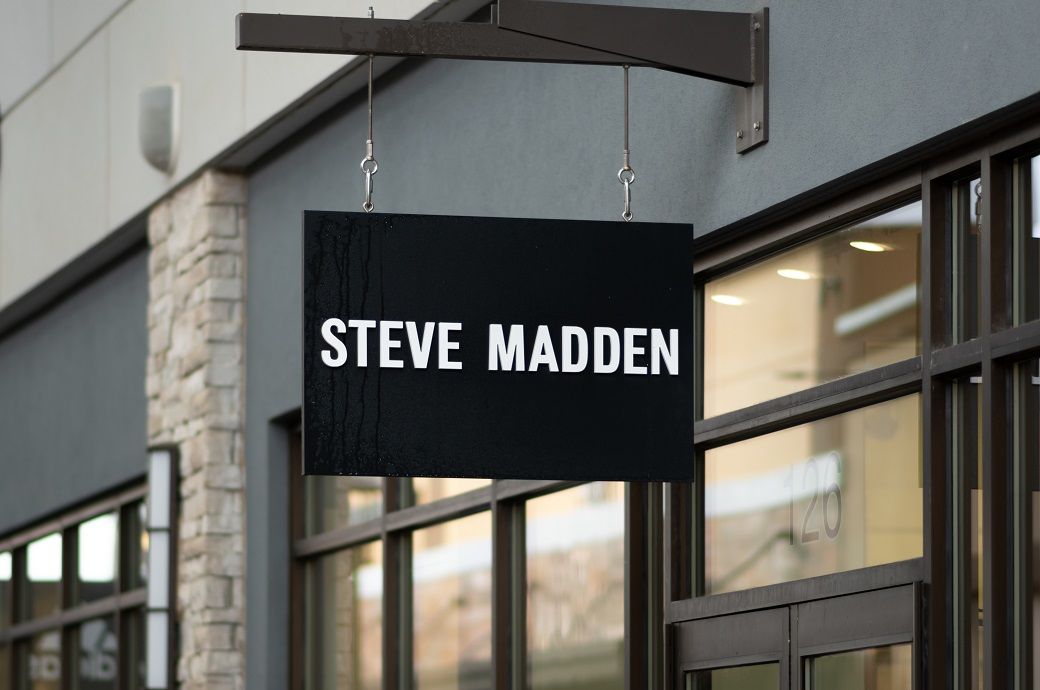
The gross profit increased to $277.4 million, with the gross margin stable at 41.5 per cent. On an adjusted basis, gross margin expanded to 43.4 per cent from 41.6 per cent, reflecting underlying pricing power and mix, partly offsetting tariff pressures.
Steven Madden has reported revenue of $667.9 million in Q3 2025, up 6.9 per cent, driven by Kurt Geiger and strong direct-to-consumer growth, while wholesale declined.
Tariffs and higher costs cut operating margin to 4.7 per cent and net income to $20.5 million.
The company maintains dividends and backed by omni-channel momentum and mitigation efforts, forecasts 27–30 per cent Q4 revenue growth.
The operating expenses rose sharply, driven by integration, store and concession expansion and higher costs linked to strategic initiatives. Operating expenses grew to $246 million from $178.9 million, rising to 36.8 per cent of revenue from 28.6 per cent. Adjusted operating expenses were 36.4 per cent of revenue, compared with 27.9 per cent a year earlier, Steven Madden said in a press release.
The income from operations dropped to $31.4 million, or 4.7 per cent of revenue, from $74.6 million, or 11.9 per cent, in the third quarter of 2024. On an adjusted basis, operating income was $46.3 million, or 6.9 per cent of revenue, versus $85.4 million, or 13.7 per cent, a year ago.
The net income attributable to Steven Madden, Ltd fell to $20.5 million, or $0.29 per diluted share, compared with $55.3 million, or $0.77 per diluted share, in the prior-year quarter. Adjusted net income was $30.4 million, or $0.43 per diluted share, down from $64.8 million, or $0.91 per diluted share.
Channel-wise, wholesale revenue declined 10.7 per cent to $442.7 million. Excluding Kurt Geiger, wholesale revenue was down 19 per cent. Wholesale footwear revenue fell 10.9 per cent, or 16.7 per cent excluding Kurt Geiger, while wholesale accessories and apparel revenue declined 10.3 per cent, or 22.5 per cent excluding Kurt Geiger. Wholesale gross margin contracted to 32.7 per cent from 35.5 per cent, with adjusted wholesale gross margin at 33.6 per cent, reflecting tariff impacts.
Direct-to-consumer (DTC) revenue surged 76.6 per cent to $221.5 million. Excluding Kurt Geiger, direct-to-consumer revenue still edged up 1.5 per cent, signalling resilient consumer demand for core brands. DTC gross margin stood at 58.3 per cent, down from 64 per cent a year earlier; on an adjusted basis it was 61.9 per cent, pressured by tariffs and the addition of Kurt Geiger’s concessions business.
At quarter-end, Steve Madden operated 397 brick-and-mortar stores, including 99 outlets, alongside 7 e-commerce platforms and 133 company-operated concessions in international markets, underlining its expanding omni-channel footprint.
The balance sheet reflected the strategic acquisition-led expansion. Total assets rose to $2 billion from $1.41 billion at year-end 2024, driven by higher inventories, right-of-use assets, goodwill and intangibles tied to acquisitions. Long-term debt increased to $293.8 million, with cash, cash equivalents and short-term investments at $108.9 million, resulting in net debt of approximately $185 million. Total liabilities climbed to $1.11 billion, while total stockholders’ equity improved modestly to $886.1 million.
“As anticipated, the third quarter was challenging, driven largely by the impact of new tariffs on goods imported into the United States. That said, we are pleased with underlying demand for our brands and products. Consumers have responded favourably to our Fall assortments, particularly in our flagship Steve Madden brand,” said Edward Rosenfeld, chairman and chief executive officer (CEO) at Steve Madden.
In the first nine months (9M) of 2025, net cash provided by operating activities was $67.6 million, down from $94.2 million in the same period of 2024, reflecting lower earnings and working capital movements. Net cash used in investing activities rose significantly to $389.4 million, while financing activities provided $237.5 million, primarily from new borrowings, partly offset by dividends and limited share repurchases.
The company did not repurchase any shares in the open market during the quarter, signalling a preference to preserve liquidity and support strategic investments. The board of directors declared a quarterly cash dividend of $0.21 per share, payable on December 26, 2025, added the release.
For the fourth quarter of 2025, the company forecasts revenue growth of 27 to 30 per cent versus the prior-year period. Reported diluted EPS is guided in the range of $0.30 to $0.35, with adjusted diluted EPS projected between $0.41 and $0.46. The outlook embeds non-GAAP adjustments of $0.11 per diluted share.
Fibre2Fashion News Desk (SG)
-

 Business1 week ago
Business1 week agoGST rationalisation impact: Higher RBI dividend expected to offset revenue shortfall; CareEdge flags tax pressure – The Times of India
-

 Entertainment6 days ago
Entertainment6 days agoChina unveils£5.4 bn Fujian, its most advanced aircraft carrier yet
-

 Tech1 week ago
Tech1 week agoBlood Tests for Alzheimer’s Are Here
-

 Sports1 week ago
Sports1 week agoPeat wows in debut as Arizona beats No. 3 Florida
-

 Business1 week ago
Business1 week agoSetback for expatriates? Delhi HC upholds mandatory EPFO membership; what this means for foreign staff – The Times of India
-
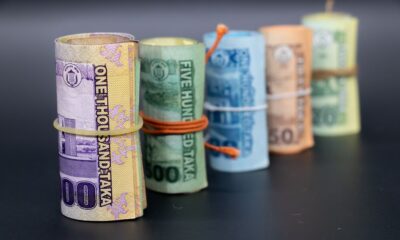
 Fashion1 week ago
Fashion1 week agoBangladesh Bank allows foreign currency-taka swap facility for dealers
-

 Politics1 week ago
Politics1 week agoTrump links Republicans’ election setbacks to record US govt shutdown
-

 Tech1 week ago
Tech1 week agoZohran Mamdani Just Inherited the NYPD Surveillance State




